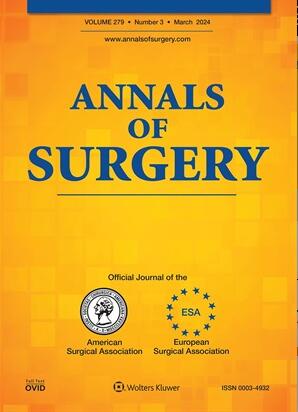An Open-Architecture AI Model for CPT Coding in Breast Surgery: Development, Validation, and Prospective Testing.
IF 6.4
1区 医学
Q1 SURGERY
引用次数: 0
Abstract
OBJECTIVE To develop, validate, and prospectively test an open-architecture, transformer-based Artificial Intelligence (AI) model to extract procedure codes from free-text breast surgery operative notes. SUMMARY OF BACKGROUND DATA Operative note coding is time-intensive and error-prone, leading to lost revenue and compliance risks. While AI offers potential solutions, adoption has been limited due to proprietary, closed-source systems lacking transparency and standardized validation. METHODS We included all institutional breast surgery operative notes from July 2017 to December 2023. Expert medical coders manually reviewed and validated surgeon-assigned Current Procedural Terminology (CPT) codes, establishing a reference standard. We developed and validated an AI model to predict CPT codes from operative notes using two versions of the pre-trained GatorTron clinical language model: a compact 345 million-parameter model and a larger 3.9 billion-parameter model, each fine-tuned on our labeled dataset. Performance was evaluated using the area under the precision-recall curve (AUPRC). Prospective testing was conducted on operative notes from May to October 2024. RESULTS Our dataset included 3,259 operative notes with 8,036 CPT codes. Surgeon coding discrepancies were present in 12% of cases (overcoding: 8%, undercoding: 10%). The AI model showed strong alignment with the reference standard (compact version AUPRC: 0.976 [0.970, 0.983], large version AUPRC: 0.981 [0.977, 0.986]) on cross-validation, outperforming surgeons (AUPRC: 0.937). Prospective testing on 268 notes confirmed strong real-world performance. CONCLUSIONS Our open-architecture AI model demonstrated high performance in automating CPT code extraction, offering a scalable and transparent solution to improve surgical coding efficiency. Future work will assess whether AI can surpass human coders in accuracy and reliability.乳腺手术中CPT编码的开放式AI模型:开发、验证和前瞻性测试。
目的开发、验证并前瞻性测试一种开放式结构、基于变压器的人工智能(AI)模型,用于从自由文本的乳房手术记录中提取手术代码。操作笔记编码耗时且容易出错,会导致收入损失和合规风险。虽然人工智能提供了潜在的解决方案,但由于专有的闭源系统缺乏透明度和标准化验证,采用受到限制。方法纳入2017年7月至2023年12月所有机构乳房外科手术记录。医学编码专家手动审查和验证外科医生指定的当前程序术语(CPT)代码,建立参考标准。我们开发并验证了一个人工智能模型,使用预训练的GatorTron临床语言模型的两个版本来预测手术笔记中的CPT代码:一个紧凑的3.45亿参数模型和一个更大的39亿参数模型,每个模型都在我们的标记数据集上进行了微调。使用精确召回曲线下面积(AUPRC)来评估性能。2024年5月至10月对手术笔记进行前瞻性测试。结果我们的数据集包括3259个手术笔记,8036个CPT代码。12%的病例存在外科医生编码差异(编码过高:8%,编码不足:10%)。交叉验证表明,AI模型与参考标准(紧凑版AUPRC: 0.976[0.970, 0.983],大型版AUPRC: 0.981[0.977, 0.986])的一致性较强,优于外科医生(AUPRC: 0.937)。对268个音符的前瞻性测试证实了强大的实际性能。结论开放式人工智能模型在CPT编码自动提取方面表现出较高的性能,为提高手术编码效率提供了可扩展、透明的解决方案。未来的工作将评估人工智能是否能在准确性和可靠性方面超越人类编码员。
本文章由计算机程序翻译,如有差异,请以英文原文为准。
求助全文
约1分钟内获得全文
求助全文
来源期刊

Annals of surgery
医学-外科
CiteScore
14.40
自引率
4.40%
发文量
687
审稿时长
4 months
期刊介绍:
The Annals of Surgery is a renowned surgery journal, recognized globally for its extensive scholarly references. It serves as a valuable resource for the international medical community by disseminating knowledge regarding important developments in surgical science and practice. Surgeons regularly turn to the Annals of Surgery to stay updated on innovative practices and techniques. The journal also offers special editorial features such as "Advances in Surgical Technique," offering timely coverage of ongoing clinical issues. Additionally, the journal publishes monthly review articles that address the latest concerns in surgical practice.
 求助内容:
求助内容: 应助结果提醒方式:
应助结果提醒方式:


